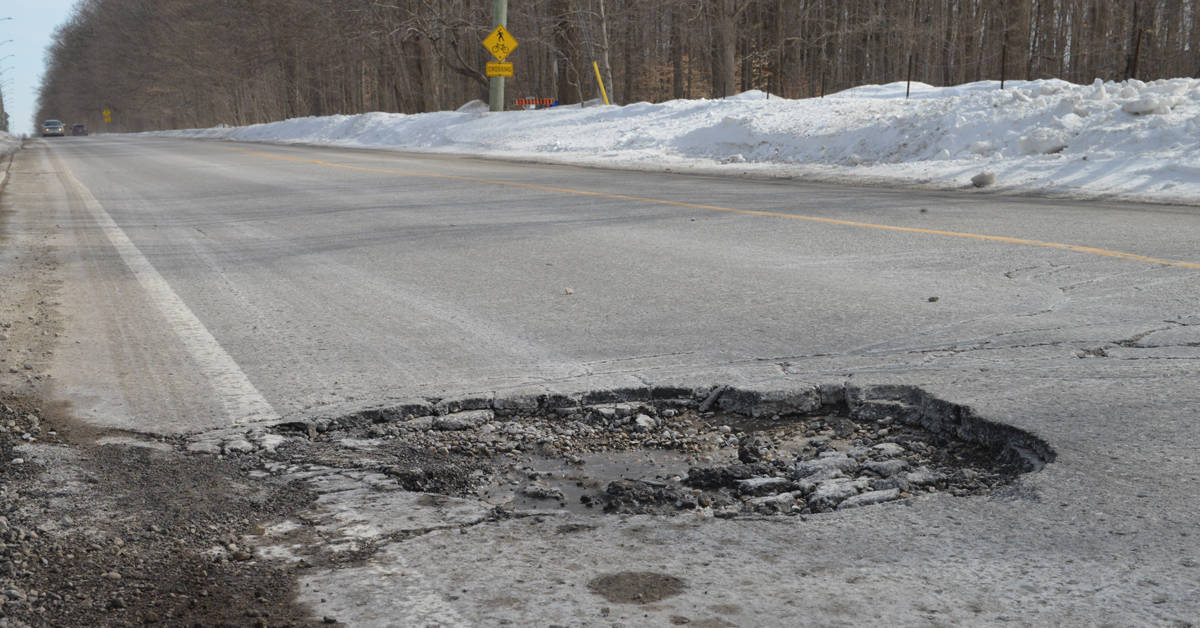Drivers are well aware that we’re in the midst of pothole season, that time of year where municipalities never quite keep up with the transition from snow-covered roads to something resembling the surface of the moon.
The drive down particularly bad roads can be akin to a slalom course as drivers attempt to stay out of the divots. For those craters that go unseen until too late – or that can’t be avoided due to, say, oncoming traffic – the results can range from jarred teeth to costly car repairs, or likely some combination thereof.
The situation means plenty of extra work for municipal road crews, who are at times alternating between clearing snow from the roads and filling potholes, some of them the result of snow-clearing efforts.
This year has been particularly problematic, notes Woolwich manager of operations Carter Maguire.
Rutted gravel roads and pothole-strewn asphalt are largely unavoidable offshoots of winter, particularly one as rough and freeze-thaw prone as we’re currently experiencing.
“We have staff, whenever the weather and the road conditions allow us to, out addressing potholes. What we do struggle with is that when you have warm days with melts, when there’s water in potholes,” he said. “You have to be able to extract the water, so an ideal condition for potholes is a number of days of dry so that the meltwaters have come out of the potholes so that we can actually get material to stick and stay into potholes,” he said.
While Woolwich does use cold patch in some cases, the preference is to make use of a hotbox tool that allows the roadway to be heated up and warm material applied for better adhesion. Right now, there’s a shortage of hot asphalt, so the township is warming up cold patch when time permits, Maguire explained.
“If you throw in … just think of kitty litter that’s frozen or some material where everything is frozen in it, it’s almost like just throwing rice in the hole. We’re using the hotbox, we’re able to warm that material up so that it becomes malleable and then fill in the pothole.”
A number of freeze-thaw cycles and fair bit of rain at inopportune times have combined to leave divots in asphalt roads and turn the gravel ones into washboards. Some significant winter events in the last few weeks haven’t helped.
Crews are reacting to reports from the public to help identify problem areas.
“We’re out to try and address the complaints as soon as possible, but this time of year, you go to address one pothole … the crews aren’t going to drive by [others] – they will try and address all of them within that area,” Maguire explained.
In Wellesley Township, director of public works Chris Cook said crews have been in pothole-season mode as the weather transitions.
“In Wellesley, we don’t generally receive many pothole complaints, but when the snow and drifting let up and we’re able to, we have been out cold patching any potholes we find.”









